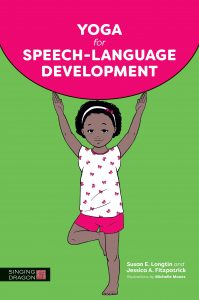
Autism spectrum disorder (ASD) refers to a broad category of neurodevelopmental disabilities defined by two core characteristics, namely 1) impairments in social communication and social interaction and 2) the presence of restricted, repetitive patterns of behaviors, interests, and activities (American Psychiatric Association 2013). Deficits in both of these areas must be present in order for an individual to be diagnosed with ASD. ASD affects the abilities to initiate and maintain interactions, establish appropriate eye contact, and take turns with others. Although the onset of the condition must occur in the early developmental period, usually before three years, symptoms might not manifest until somewhat later when the demands of social communication exceed the child’s capacities and often persist across the lifespan. ASD has increased in prevalence over the past two decades, perhaps due to a widening of the spectrum to include milder cases, increased awareness of the early signs of the disability, a combination of the two, or some other factor. About 1 in 59 children has been identified with ASD according to the most recent estimate from the Centers for Disease Control and Prevention.
The introduction of yoga to children with ASD can build strength, balance, and flexibility. The practice of yoga for these children also presents numerous other physical, cognitive, and emotional benefits. Yoga provides a relaxed, playful environment that stimulates communication and socialization. Since children with ASD exhibit difficulty with social-relatedness, partner yoga, in particular, can promote eye contact, joint attention, and reciprocity among peers. In addition, children with ASD tend to engage in more solitary, concrete play of a repetitive nature rather than cooperative, symbolic play.
Partner yoga poses allow children to assume the roles of different people, animals, elements of nature, and objects. Furthermore, partner yoga requires following directions involving many different types of words. These include spatial, temporal, and directional concepts, body parts, and actions. Some yoga poses that can be practiced with a partner include tree, chair, warrior II, warrior III, and boat.
For example, the directions for boat pose include the following steps:
- First, sit down and face your partner.
- Then, bend your knees.
- Next, put the bottoms of your feet together.
- Then, hold your partner’s wrists.
- Next, straighten your right leg.
- Last, straighten your left leg.
This sequence involves understanding temporal concepts, such “first,” “then,” “next,” and “last”; spatial descriptive concepts, such as “right” and left”; body parts, such as “knees,” “feet,” “wrists,” and “leg”; and action words, such as “sit,” “bend,” “put,” “hold,” and “straighten.” To add further language to this partner pose practice, an adult can lead the children in singing “Row, Row, Row Your Boat” or another fun song depending on their developmental levels and interests. Encourage, but do not force, eye contact between partners because this can be uncomfortable for them.
In addition to ASD, partner yoga can facilitate communication and socialization in children diagnosed with other neurodevelopmental disabilities including language disorders, speech sound disorders, intellectual disabilities, and attention deficit/hyperactivity disorders (AD/HD). Children with these conditions can feel frustrated when they are unable to understand others and express themselves in an effective, appropriate manner.
Partner yoga provides a fun, interactive, engaging context for practicing communication skills. To learn more about how yoga can enhance prelinguistic communication, breath support for speech, motor planning for speech, vocabulary and linguistic concepts, symbolic play, and emergent literacy in children, please see Longtin and Fitzpatrick’s book, Yoga for Speech-Language Development published by Singing Dragon.

Partner boat pose variation
 Yoga for Speech-Language Development
Yoga for Speech-Language Development
Susan E. Longtin and Jessica A. Fitzpatrick, illustrated by Michelle Mozes
This is the first book to present yogic practices and resources for enhancing speech-language development in young children from birth through to age 12. With easy-to-carry out exercises and demonstrative illustrations throughout, this innovative approach can be used to improve a range of speech-language issues. Read more